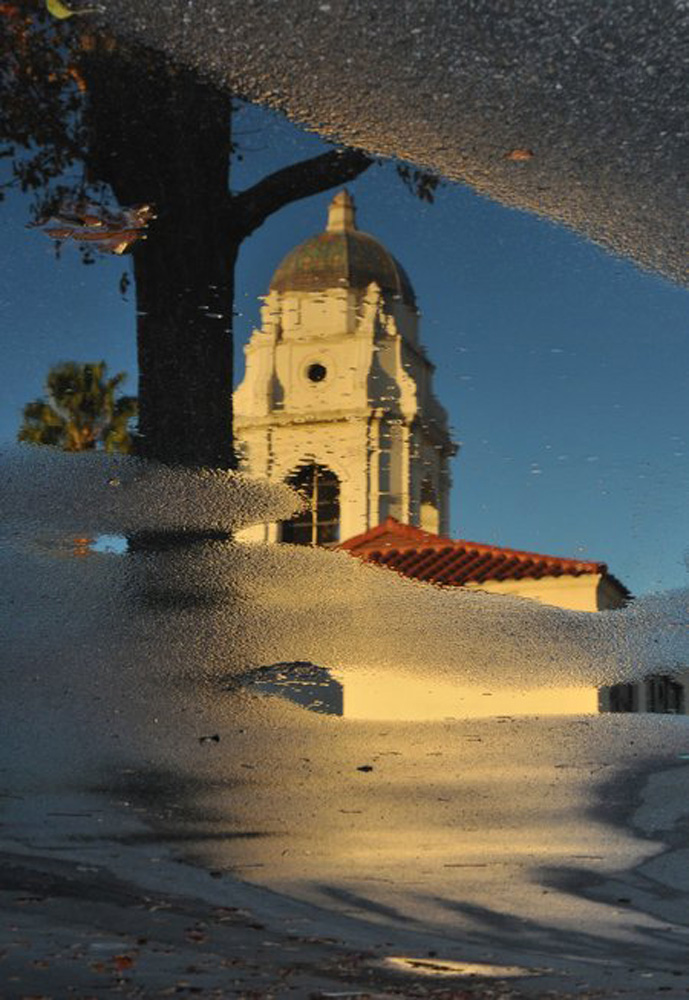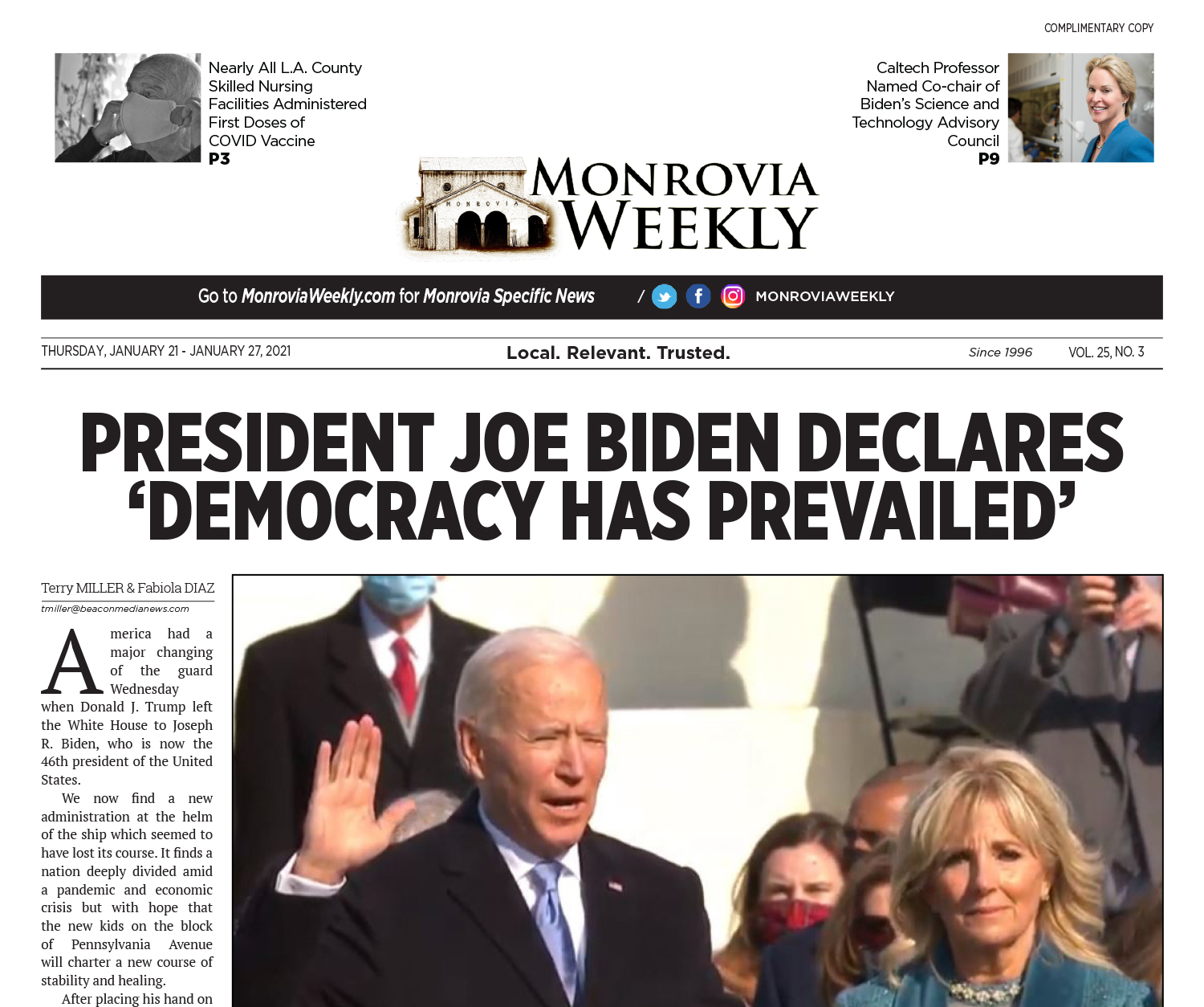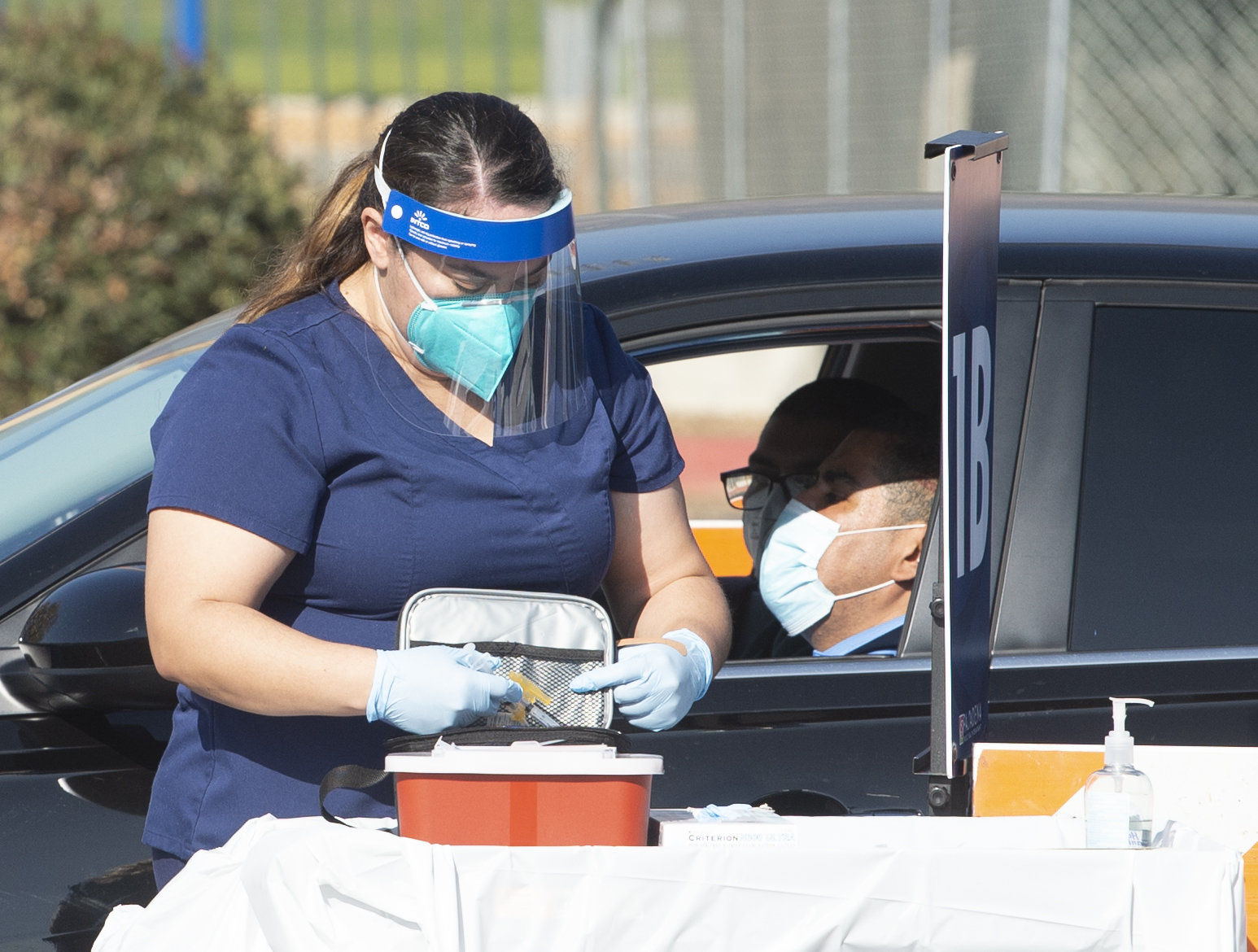By Steve Baker
Public education was held in high esteem by the founders of Monrovia from its beginning in May of 1886. William Monroe, a former school teacher himself, underwrote the cost of a public school from November of 1886 until May of 1887, when an elementary school district could be formed. The first public school building, the Orange Avenue School, welcomed its first classes in October of 1887. Nearly six years later, in the Spring of 1893, there was common agreement that a high school should be established in Monrovia as well. The population of the city was slightly over 900. The election on the matter of forming a high school district was set for July 22, 1893—a month and day significant for the high school over one hundred years later.
Seventy-six votes were cast in favor of the new district, with one dissenting vote. As one later historian observed, “Never since that date has there been such an overwhelming majority in favor of a school issue.” On September 18, 1893 the new high school opened with 27 students. The school was housed in two rooms of the Orange Avenue School. Two years later the high school had its first graduating class: Carroll Fowler and Ida Whittington. Both went on to higher education.
By 1903, both the elementary and high schools were bursting at the seams. The elementary school district was able to pass a bond measure in the amount of $30,000 to construct a new school building on Ivy Avenue in Monrovia, now the site of Clifton Middle School. The high school district, lacking the funding to construct a school building of its own, rented space in the new building and moved the high school to Ivy Avenue. After another elementary school was constructed in 1907, the high school only occupied the campus. Another building was added to the campus in 1912, designed by the prominent Los Angeles architectural firm of Allison & Allison.
In the early years, each graduating class at the high school chose its own colors, but by 1903, green and white had been chosen for the school as a whole. The school mascot, the “Wildcat”, must have been chosen about the same time.
The neighboring communities of Arcadia and Duarte both voted to join the Monrovia City High School District in 1920—Duarte on July 26 and Arcadia on November 15. The increased student population made the Ivy Avenue buildings inadequate, and the limited size of the campus dictated a new location for the high school. On June 14, 1927 a successful bond election in the amount of $625,000 made the purchase of the present campus at Colorado and Madison and the construction of the original six buildings on the campus possible. Later that year a petition was submitted to the Los Angeles County Board of Supervisors to change the name of the high school to the Monrovia-Arcadia-Duarte High School.
In April of 1928 the cornerstone was laid for the new high school. John C. Austin and Frederic M. Ashley of Los Angeles were the principal architects, with the assistance of Austin Whittlesey. The construction cost was $495,000. Dedication of the new high school took place on January 25, 1929, after the move to the new campus from Ivy Avenue was completed. The dedicatory address was given by R.B. von Klein-Smid, president of the University of Southern California. The façade of the main building bore the names of the constituent communities above the arched entry doors to the mail building.
New buildings were added to the campus over the next twenty years: a new gymnasium, a social science building, and a new shop building. Superintendent A. K. Wilson wrote in 1943 that in the first fifty years of its existence, 4000 students had graduated from the high school and an additional 1,000 had attended. Also in 1943 Le Roy Criss, a member of a pioneer Black family in Monrovia, the Adams Family, dropped out of high school and enlisted in the Army. He became a member of the famed Tuskegee Airmen. He had learned to fly at the Monrovia Airport.
Monrovia High School’s first association with an American president was in October of 1946, when the auditorium was the scene of the 4th debate between incumbent congressman Jerry Voorhis of the 12th Congressional District and his challenger, Richard M. Nixon. It was Nixon’s first campaign for public office, and he went on to successfully defeat Voorhis and begin his journey to the White House.
The post World War II boom caused a surge in the population of the San Gabriel Valley, as orange groves were replaced by new homes for G.I.’s who had been introduced to California during the war. Arcadia grew to the extent that it could support its own high school district, and it voted to do so effective July 1, 1951. When the last of the Arcadia students graduated in 1954, the high school became Monrovia-Duarte High School. Duarte had also grown, and there was similar sentiment to establishing a Duarte High School as well. A $975,000 bond measure was approved by the voters of the district in November of 1955 for the construction of Duarte High School, with the understanding that at is completion Duarte would withdraw from the unified high school district. With the completion of the new high school and the graduation of the last of the Duarte students, the circle had come full round and the high school’s official name was once again Monrovia High School. And in July of 1961 the elementary school district and the high school district merged to form the Monrovia Unified School District, ending the high school district’s nearly seventy year history as a separate entity.
Fifty years after its first encounter with an American president, Monrovia High School was visited by an incumbent president, Bill Clinton, who spoke in the auditorium. Monrovia had gained national attention for is focus on attendance and its anti-truancy ordinance, and Clinton came to praise the efforts and to recommend them to other districts throughout the nation. It was a significant day for Clinton to visit—one hundred and three years earlier the voters of Monrovia had voted to create the very high school that Clinton visited.
After a major renovation of the high school buildings from 1955 to 1957, no new construction took place until 2006, when a successful bond measure made possible another renovation of the existing buildings and the construction of new ones. The physical features of the campus were improved as well.
The bell in the tower of Monrovia High School has an interesting history. It was originally installed in the tower of the Orange Avenue School of 1887, first home to Monrovia High School. When that building was demolished in 1918, the bell went to the district warehouse. Rediscovered in 1964, the bell was given a place of honor at the high school. Another interesting landmark is the “Big M” on the hillside overlooking the high school campus.
Created in 1951, the lighting was so arranged that at night the center section in the form of a “V” could be lighted separately as a symbol of the victory of one of the high school’s sports team.
And speaking of sports, Monrovia High School has produced some outstanding athletes: Ed Shaw, Hardiman Cureton, Johnny Lindell, Keith Lincoln, George Trapp, Corie Blount, Fair Hooker, Damon Griffin, Chris Hale, and Roy Zimmerman. For 58 years, from 1952 to 2010, a C.I.F. Southern Section championship eluded the varsity football team. After ten tries, the high school achieved that distinction in 2010, repeating that accomplishment in 2011 and 2012 as well.
Several alumna of Monrovia High School have brought honor to their Alma Mater. Colleen Kay Hutchins was named as Miss America during the 1951-1952 school year, and Dawn Baker later reigned as Queen of the 76th Tournament of Roses.
Monrovia High School also has a long history of musical excellence. The band and orchestra first achieved distinction under the thirty-year leadership of Harold Scott, while the choral music organizations were greatly expanded under the direction of Chester Ullom during a similar tenure. The drama department has won regional awards for its productions.
In the words of the Alma Mater, “There’s a high school in the valley which is lacking not in fame. Through the triumphs of her students, M.H.S. has gained a name.” Monrovia High School does indeed have a name, a proud history, and a bright future. Fight on, Wildcats!







